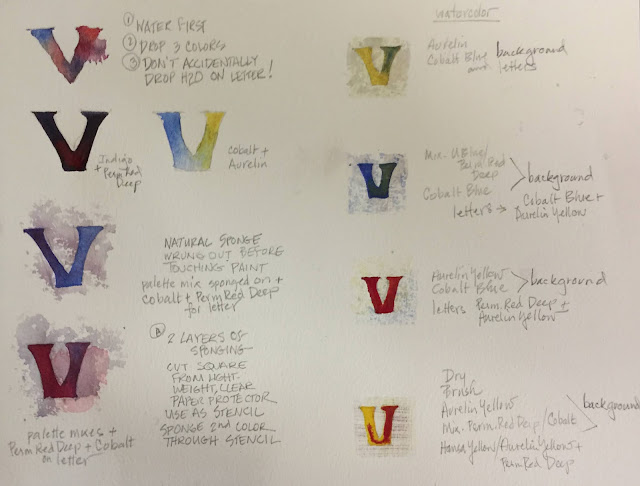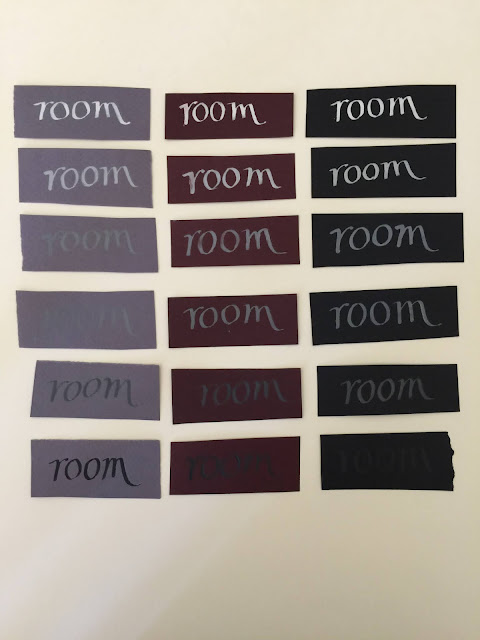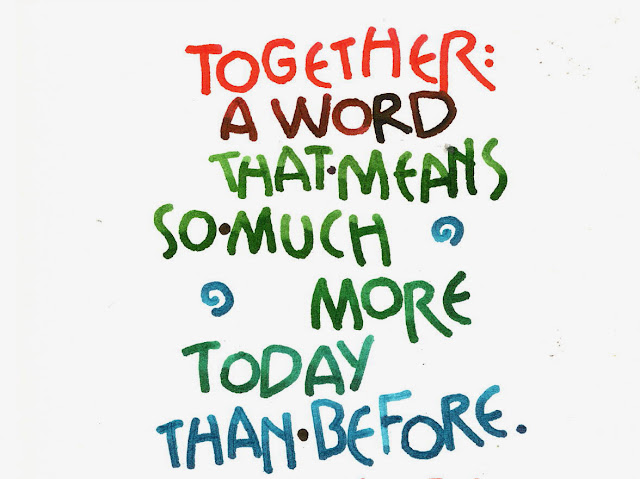One of life's simple pleasures, getting together with people with similar interests, causes me to search for art and writing classes. I've never stopped being a student. I like the inspiration I collect from other people as they work on art or writing. Like the old quilting bees from long ago, the communal nature of these gatherings satisfies a need in me. I have friends who find that same space by playing cards or Mahjong, making crafts, or learning how to make a better pie crust. We humans thrive in community.
My favorite mantra for working in art, "It's just practice," helped me through classes at the annual calligraphy conference I attended by Zoom. Though I was eager to begin, the old familiar feelings of failure, of being not quite good enough cropped up. But I pushed them back with "It's just practice."
The first class I picked concentrated on values, with exercises going from dark to light and back again. Same kind of exercises I've been doing since college with a graphite pencil. The result becomes a scale that shows the multitude of greys possible. I thought when I signed up, this class was for me. I love working with pencil and grey scales. I read the list of supplies and realized that there was more to the class than the pencil I had in my hand. We were to do the same thing with gouache, a medium I rarely used.
 |
| Watercolor mixes on the page |
I've done a hundred watercolor color palettes. They are fun to do as you can see the mixing of color right on the page. I'm pretty good at getting a variety in the mixtures. But gouache is different. Gouache is an opaque watercolor, thick and creamy like acrylics, which has usurped gouache's place in most painters' toolboxes. Many calligraphers still use gouache, though, in their broad-edged pens to add color to their lettering. I've never tried it since I have trouble doing calligraphy with just the usual ink. But here I was, sitting in a class with calligraphers, much better than me, holding four brushes clasped in my fingers to mix a gradual set of darks to lights. I found it hard to either darken or lighten the colors so that I achieved the slight gradations I could find with a pencil. I repeated painting each variation on four different colored papers. Each color of paper changed the relationship of the gradations -- a two-for-one exercise. The darkest paint at the bottom disappeared on the darker paper. The mid-tones did the same on the middle-value paper.

Another humbling experience came from my second class. Watching the instructor was like watching magic. She moved her pen across the page with ease. She played with each letter. Swoop and a beautiful line resulted. Her mantra, "Relax your fingers, relax your shoulders, relax your whole body, breathe," set us in a quiet place to concentrate but also to let go of all that tightness we can develop as we try to be perfect.
"I can tell when you are trying to work the pen and not go with it," she said. I listened and attempted to relax into the stroke just as I could with a pencil or with a brush when I wasn't trying to draw letters. Those old familiar feelings crept in. When we took a break, I walked away feeling frustrated. When I got back to my practice sheet, I thought, "Not too bad for a first practice. It's okay. It's just practice."
When I finished the week, I had a good collection of various techniques. I had a chance to see what other people were making. I realized I'd gotten better with a broad-edged pen (Practice, practice, practice: another good mantra). I discovered in my last class, which was the design of one letter inside a geometric shape, that I wanted to continue with that concept and make another A to Z book with each letter representing a flower.
Take a look at the mini-classes in calligraphy that are available from the Legacies III International Calligraphy Conference. You can purchase them even though you were not an attendee. These classes are a great way to try calligraphy from some of the masters.
https://www.calligraphyconference.org
Or check out these instructors whose classes I took at the conference:
Janet Takahashi: https://janettakahashi.com
Annie Cicale: https://www.cicaleletteringdesign.com
Carrie Imai: https://carriedesigns.com
Judy Detrick: http://www.judydetrick.com















